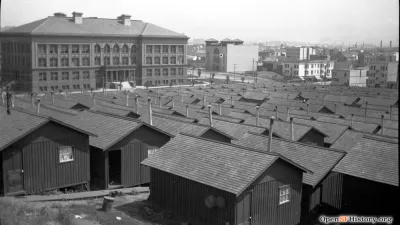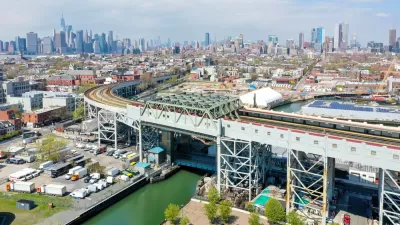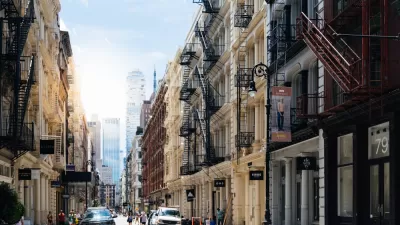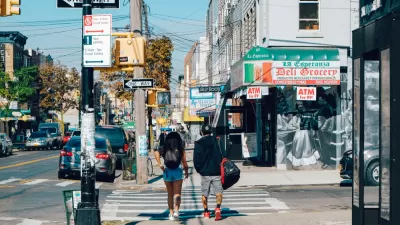Will Doig discusses the increasing speed at which urban bohemias are colonized, popularized, and gentrified. Does the rapid transformation of urban subculture into mainstream culture, mark the end of urban bohemia?
Boy, this whole urban inversion thing is really taking off. No sooner have we diagnosed a widespread return to the city, and already we're running out of old warehouse districts and urban waterfronts for starving artists to colonize.
Or at least, such is the situation described by Robert Anasi, in his new book "The Last Bohemia: Scenes From the Life of Williamsburg," and in a recent Salon article by Will Doig.
Take Bushwick, Brooklyn for example. No sooner was it identified as a bohemian alternative to neighboring Williamsburg, than the gentrifiers moved in. "'The change is indeed dramatic,' wrote Crain's New York of Bushwick last year. 'In the last year alone, three cafes, two bars, one art gallery, one organic grocer and several other retail businesses have opened.' By 2011, rents were up 63 percent over four years earlier."
According to Christopher Mele, author of "Selling the Lower East Side," "Bohemian neighborhoods were once considered stubborn and resistant to gentrification, but that's long gone. Just as we are likely to have quick and easy access to niche or specialized markets for music, art, design and other cultural products, we have access to urban neighborhoods with distinct place identities."
With cities overrun with voracious developers and children from upper-middle-class families, is suburbia the alternative? Such is the case made by Malu Byrne (daughter of David), who wrote in a New York Times Op-Ed published in May that, "she 'might need to be out of the city in order to sustain my creative spirit.' 'The notion of ‘making it in the city' is increasingly nostalgic and impossible,' she writes. 'Yes, the city supports the arts, but not its up-and-coming artists.'
Thanks to Emily Williams
FULL STORY: Can bohemia be saved?

Alabama: Trump Terminates Settlements for Black Communities Harmed By Raw Sewage
Trump deemed the landmark civil rights agreement “illegal DEI and environmental justice policy.”

Planetizen Federal Action Tracker
A weekly monitor of how Trump’s orders and actions are impacting planners and planning in America.

The 120 Year Old Tiny Home Villages That Sheltered San Francisco’s Earthquake Refugees
More than a century ago, San Francisco mobilized to house thousands of residents displaced by the 1906 earthquake. Could their strategy offer a model for the present?

Opinion: California’s SB 79 Would Improve Housing Affordability and Transit Access
A proposed bill would legalize transit-oriented development statewide.

Record Temperatures Prompt Push for Environmental Justice Bills
Nevada legislators are proposing laws that would mandate heat mitigation measures to protect residents from the impacts of extreme heat.

Downtown Pittsburgh Set to Gain 1,300 New Housing Units
Pittsburgh’s office buildings, many of which date back to the early 20th century, are prime candidates for conversion to housing.
Urban Design for Planners 1: Software Tools
This six-course series explores essential urban design concepts using open source software and equips planners with the tools they need to participate fully in the urban design process.
Planning for Universal Design
Learn the tools for implementing Universal Design in planning regulations.
Clanton & Associates, Inc.
Jessamine County Fiscal Court
Institute for Housing and Urban Development Studies (IHS)
City of Grandview
Harvard GSD Executive Education
Toledo-Lucas County Plan Commissions
Salt Lake City
NYU Wagner Graduate School of Public Service





























